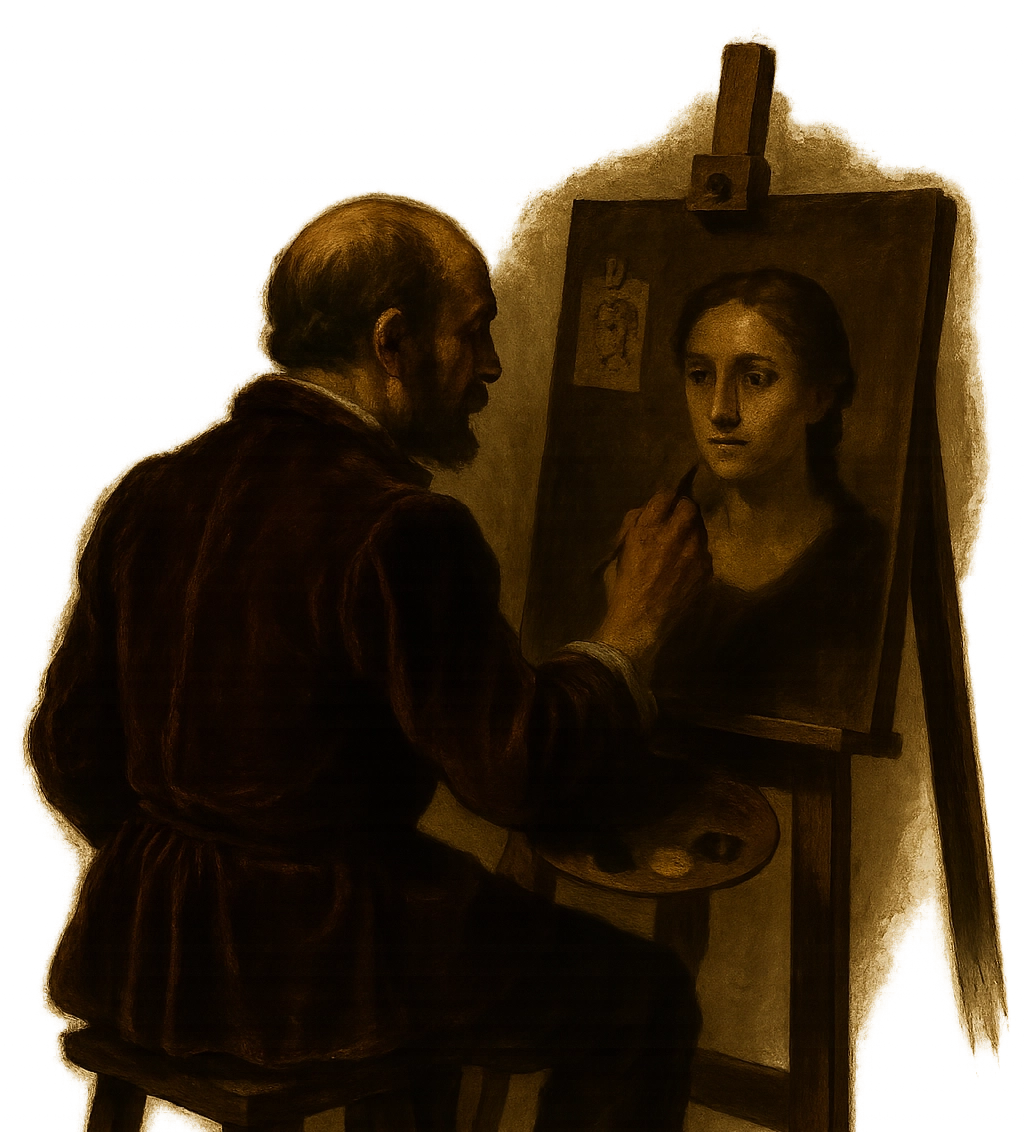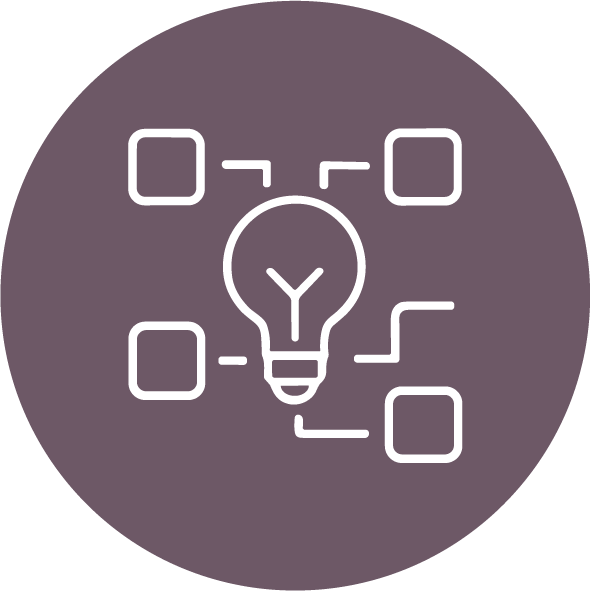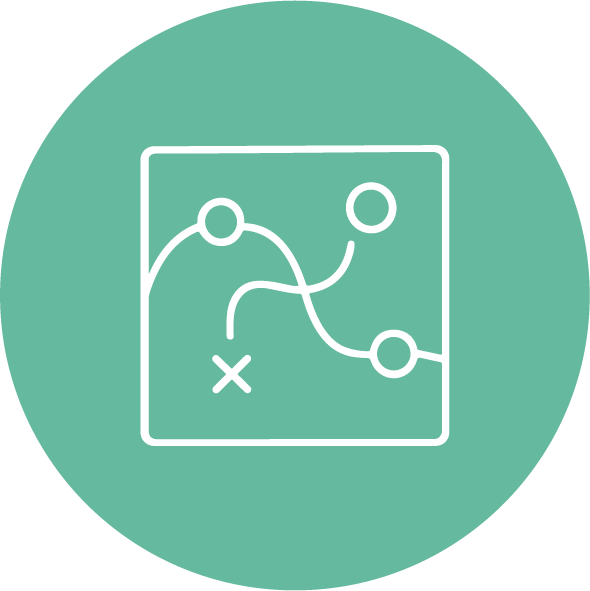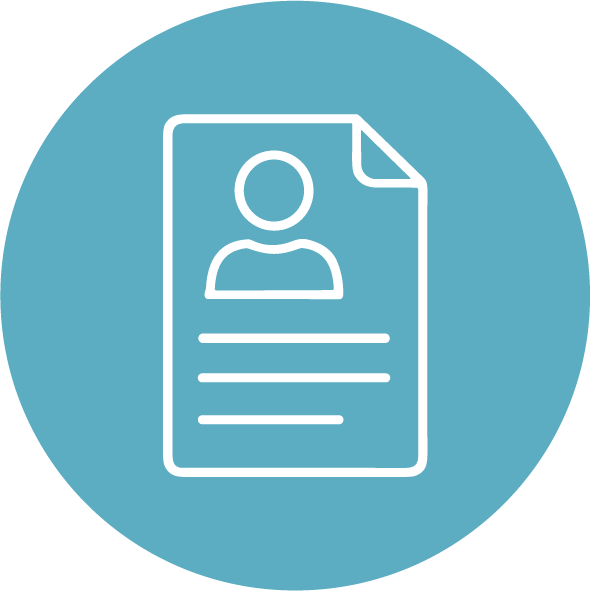The Perfect Persona
A Complete Guide to Buyer Personas
Every marketer is trying to reach someone. The challenge is knowing who.
Without a clear picture of your ideal buyers, your campaigns miss the mark, sales teams chase the wrong leads, and your ROI suffers. The solution is buyer personas—semi-fictional profiles that bring your customers to life and help align every effort across your organization.
This guide will walk you through what buyer personas are, why they matter more than ever, and exactly how to create them.

Everyone is trying to reach someone.
What is a Buyer Persona?
A buyer persona (sometimes called an “ideal client persona” or a “consumer avatar”) is a detailed, research-based profile of your ideal customer. Unlike a broad target audience, personas capture context, motivations, and buying behaviors.
Think of them as a bridge between raw data and human insight—they show not just who your customers are, but why they buy.
Definition: Buyer personas are semi-fictional characters built from real customer research, designed to guide marketing, sales, and product decisions.
Why Buyer Personas Matter in 2025
Your potential audience has never been bigger—or more distracted. Ads, emails, and social posts bombard people every day. Without personas, your marketing efforts are random at best.
With well-crafted personas, you can:
- •
Pinpoint the pain points you solve best. - •
Choose the right channels and formats to reach buyers. - •
Align sales, marketing, and service on the same customer profile. - •
Avoid wasting time and budget chasing the wrong leads.
When personas are done right, they become the foundation of your inbound strategy. You’ll see us talk about this a lot, because it’s incredibly important. Persona development informs actionable marketing decisions – visuals, communication style, channels, etc. It’s the first step in our SOAR System, because you know what they say about building a castle in a swamp!
Case Study Callout: Aspen & Eagle Lighting
Meet Aspen & Eagle Lighting, a fast-growing B2C tech company. Despite strong funding and a solid product, they struggled to scale profitably. Their ads ran across radio, print, and digital—but results were flat.
Why? They weren’t reaching the right people.
By building buyer personas, Aspen & Eagle shifted their focus:
They discovered their best buyers weren’t homeowners (as assumed) but mid-level property managers.
They learned social proof mattered more than discounts.
They realigned marketing to highlight reliability over price.
Within six months, their campaigns were sharper, sales teams were closing faster, and ROI finally improved.
Lesson: Personas transform marketing from guesswork into strategy.
Buyer Persona vs. Target Audience
| Target Audience | Buyer Persona |
|---|---|
| Broad group traits (age, gender, location, job title) | Semi-fictional character with story, motivations, challenges |
| Useful for sizing markets | Useful for shaping messages and offers |
| Example: “Women 30–45, suburban, married” | Example: “Productive Penelope, 42, team manager, struggles with vendor reliability, values efficiency” |
Key takeaway: Target audiences show you who might buy. Buyer personas reveal why and how they’ll buy.
How to Build a Buyer Persona (Step-by-Step)

Step 1: Collect Customer Insights
The first step in building a buyer persona is gathering as much real-world information as possible about the people who already interact with your business. Guesswork will only take you so far — to create personas that actually reflect your customers, you need to pull data from multiple sources and perspectives.
Start close to home. Your internal teams — sales, customer service, and marketing — are sitting on a wealth of knowledge:
- •
Sales Team: Your sales reps are the frontline between your company and your customers. They know what prospects care about, which objections come up most often, and what triggers turn interest into a purchase. Their perspective can reveal what motivates buyers, what frustrates them, and what questions they consistently ask before making a decision.- •Customer Service Team: Nobody hears the “real talk” from customers quite like your service team. They field complaints, answer questions, and resolve issues every day. That means they have direct insight into your customers’ fears, frustrations, and unmet needs. This feedback is gold when you’re trying to uncover pain points that your marketing and product teams can address.
- •Marketing Team: Even though they may not interact one-on-one with customers daily, your marketing team understands how your audience behaves online — what emails get opened, which ads drive clicks, and which blog topics generate engagement. Their insights into content performance and campaign data help paint a picture of what resonates (and what doesn’t).
Once you’ve collected in-house perspectives, it’s time to go straight to the source: your customers. Talking directly to current and past buyers validates what you think you know and fills in the gaps you can’t get from analytics alone. When interviewing customers, remember to:
- •Seek out a diverse mix of participants — include happy customers, lost deals, and competitor buyers.
- •Focus on recent purchase decisions so the experience is fresh and accurate.
- •Expect both positive and negative feedback — both are essential for building accurate personas.
You don’t need hundreds of interviews — a small but varied set of conversations can reveal powerful themes and patterns. Supplement this qualitative feedback with hard data from tools like your CRM, Google Analytics, LinkedIn, and even competitive research.
By combining internal insights, customer conversations, and data analysis, you’ll form the foundation for buyer personas that go beyond surface-level demographics. You’ll uncover the motivations, frustrations, and decision-making behaviors that truly drive your customers.

Step 2: Ask the Right Questions
Your goal isn’t just demographics—it’s motivations, behaviors, and pain points.
Demographic Questions
- •What is their age, gender, ethnicity?
- •Where do they live (urban, suburban, rural)?
- •Marital status, children, housing type.
Career Questions
- •What industry do they work in?
- •What’s their role and seniority level?
- •What does their career path look like?
Lifestyle Questions
- •What does a typical day look like?
- •What goals motivate them?
- •What do they do for fun?
- •Who influences their decisions?
Buying Behavior Questions
- •What problems do they need solved?
- •How do they research purchases?
- •What objections do they raise?
- •What traits do they value in a company?
Pain-Point Questions
- •What frustrates them most?
- •What’s the most stressful part of their day?
- •What poor customer service experiences have shaped their expectations?

Step 3: Identify Patterns
Once you’ve gathered data from internal teams, customer interviews, and analytics, the next step is to look for patterns. Raw notes and individual stories won’t help much on their own — the power of personas comes from identifying the themes that repeat across multiple buyers.
As you review your research, ask yourself:
- • Which goals and motivations keep showing up?
- • What pain points or frustrations do different customers have in common?
- • Do buyers tend to follow similar decision-making paths?
- • Are there shared objections or deal-breakers that appear repeatedly?
Example: During your interviews, you might notice that mid-level managers from several different companies all describe struggling with slow vendor response times. Separately, it just sounds like a few complaints. But once you spot the pattern, it becomes clear that “responsiveness” is a core decision driver — something your persona profile should highlight and your marketing should emphasize.
Patterns like these turn scattered anecdotes into actionable insights. By grouping common threads, you transform raw data into a clear persona framework that everyone on your team can use.

Step 4: Write the Persona
Compile your insights into a short narrative. Example:
- •Name: Productive Penelope
- •Role: Department Manager at mid-size B2B firm
- •Goals: Streamline operations, meet KPIs
- •Challenges: Vendor delays, limited budget, overwhelmed team
- •Buying Behavior: Researches vendors on LinkedIn, trusts peer reviews over ads
- •Quote: “If it doesn’t save me time, it costs me money.”

Step 5: Add a Face
Give each persona a photo or AI-generated avatar. This creates a stronger emotional anchor for teams.
Cross-Departmental Uses of Buyer Personas
Personas aren’t just a marketing tool—they benefit your entire organization.
- • Sales: Prioritize qualified leads, anticipate objections, refine pitches.
- • Customer Service: Anticipate common pain points, improve support scripts.
- • Product/Development: Build features customers actually want.
- • Leadership: Allocate budget to channels that matter most.
- • HR/Onboarding: Train new employees to understand real customers from day one.
When everyone aligns around personas, you create a seamless customer journey.


Buyer Personas and Content Strategy
Every piece of inbound content works better with personas in mind.
Persona × Funnel Stage Matrix
| Stage | Content Formats | Persona Use |
|---|---|---|
| Awareness | Blogs, social posts, podcasts, digital ads | Answer questions, surface pain points |
| Consideration | Webinars, whitepapers, case studies | Compare solutions, show expertise |
| Decision | ROI calculators, testimonials, demos | Build trust, reduce objections |
Personas ensure your content matches both where customers are in the funnel and what motivates them.
Common Mistakes to Avoid
Too many companies waste time on personas that don’t work. Avoid these pitfalls:
Treating personas as one-time projects.
Guessing instead of researching.
Creating too many personas.
Confusing demographics with psychology.
Designing personas around dream clients instead of real ones.
Ignoring the customer journey.
Failing to update personas as markets shift.
FAQs About Buyer Personas
How many personas do I need?
Start with 2–3. Too many will dilute your focus.
Do personas differ between B2B and B2C?
Yes! B2B personas often include job roles, while B2C personas lean more on lifestyle and personal motivators.
What’s the difference between a persona and an ICP (ideal customer profile)?
ICP defines companies you sell to (firmographics). Personas define individuals within them.
Do personas change over time?
Absolutely. Update at least once a year, or after major industry shifts.
What’s the ROI of personas?
Research shows companies with defined personas see stronger lead quality, better close rates, and improved customer retention.
Ready to Create Your Personas?
Buyer personas are the foundation of effective inbound marketing. They help you target the right buyers, close more deals, and build customer loyalty. We built a guide to help walk you through the process.
OR, if you want to work on it together:
Our skills + your knowledge = The Perfect Persona